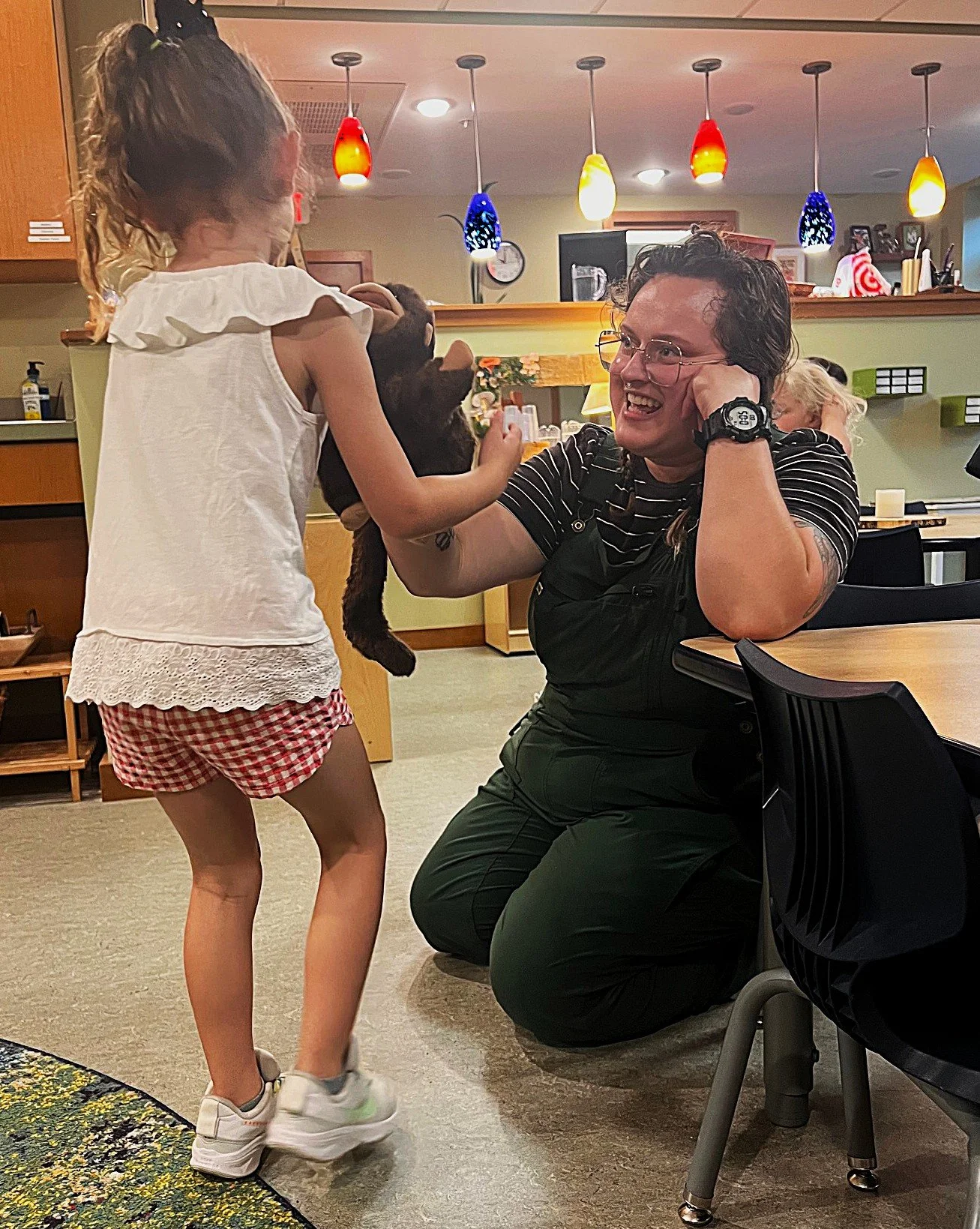All Seasons Blog
One Magical Monkey
As someone who has had careers in theatre and early childhood education, I’ve seen firsthand the marvel and wonder puppets bring to children. Puppets are magical catalysts for storytelling, providing a physical anchor to imagination. To children, they are real beings who ignite joy.
Better Together
There is something truly remarkable about the energy created when multiple seniors come to visit the preschoolers on their own territory at the Open House. The children have more confidence and comfort - this is their space, after all! - and as the experts, they gleefully show the seniors around, introduce them to their favorite toys, and ask, without much hesitation, for them to read a book on the sofa. The energy the seniors bring with them is pure enthusiasm. They come prepared to ‘oooh’ and ‘aaaah’ over the children, the classrooms, the activities, and the trinkets, art projects, and playdough creations the preschoolers bring them. It is a special thing, and it serves both populations beautifully.
Joy In The Little Things
“The magic in your childhood wasn’t because you were a child. It was because you were living in the present.”
The Heart Of All Seasons
The impact of preschool on a child’s future education has been well documented. But what about the impact on their hearts?
This year, two of my former students returned to All Seasons, one to inspire preschoolers in the Art Studio, and one to visit the senior residents and their old classrooms…
Not A Child, But YOUR Child
Our teachers know young children. They will know their class as a group. Most importantly, our teachers will know your child.
Play Ideas For Summer Days
We are mere days away from our summer breaks! Perhaps you, like me, are feeling both excited and a little apprehensive about all the time we parents will now have to fill with our kids on our own! Before any panic sets in, I’d love to share some of the secrets of how teachers at All Seasons set children up for success when we offer opportunities for play. As with most secrets about life, the play we organize at school is pretty simple when you get down to it.
Lessons in Aging and Love
In witnessing my children’s empathy and understanding, I am reminded that the seeds planted by All Seasons have blossomed into a genuine respect and compassion for elders - qualities that will serve them, and those around them, for a lifetime. Even as we navigate the uncertainties of Alzheimer’s, I am grateful that my children approach each day with open hearts and a willingness to help, making our family’s journey one of connection, resilience, and hope.
Creating the Conditions for “Flow”
Have you ever experienced a time when you’ve been so deeply immersed in an activity that you were not aware of the passage of time? When you lost all self-consciousness and were entirely focused on what was in front of you?
A Boomerang Launch From All Seasons
As June approaches, teachers feel the approaching transition. Seeing our graduates head out the little door for the last time as our students is bittersweet, but we take comfort knowing what they carry with them as they leave and the knowledge that they will be back.
Home-to-School Connections
In the Spring Room, we wanted to strengthen the connection between home and school by asking our students to share their favorite places outside of school. We emailed families and encouraged them to discuss with their children and send in pictures of these favorite spots. Once we received the photos, we created a poster board showcasing the children's favorite places and included notes about what they love about each location. The children then took turns standing in front of the class to share their favorite places with their classmates, teachers, and visiting grandparents.
Children As Superheroes
What does a superhero look like to you? Do you have invisible powers or a cape that helps you fly? Superheroes look different to everyone. They could be a mom or dad taking care of their baby or a doctor giving medicine to someone who is sick. In the Autumn Room “superhero” play takes on many faces.
Why Repeated Reading Matters For Preschoolers
“Will you read us a story?” Every day while eating their lunch, the children ask this same question.
“Sure!” I respond. “In fact, I just switched out the books and have some new ones in here!” I head to the bookshelf in search of a new book that I haven’t read to them before. But before I get there, I always hear, “Can you read the germ book?” It doesn’t matter that I’ve already read it twice today in class, or that I read it last lunch period…and the one before…and the one before that….












